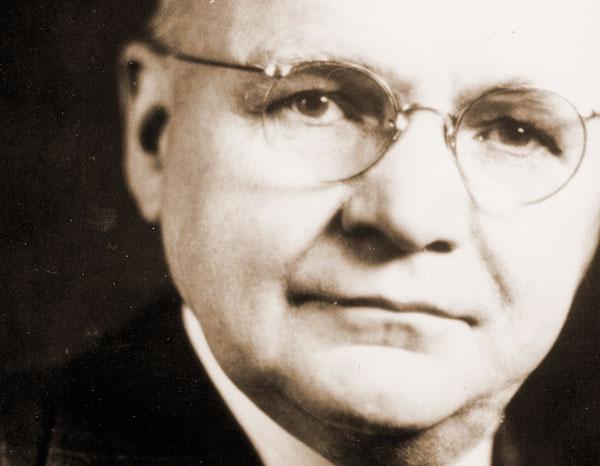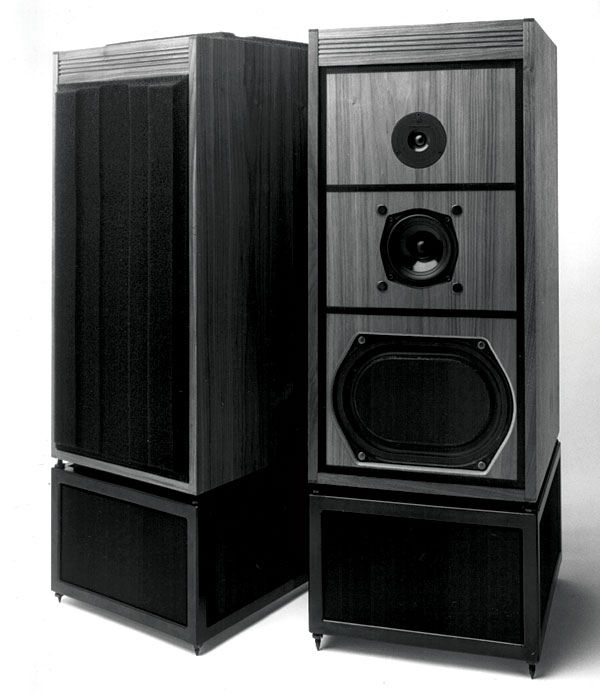| Columns Retired Columns & Blogs |
I was reading something from Listener rather than the Listening column. What fun, I expected to turn the page and be mystified by something Harvey wrote.
Trey

What I expected of them—in the short term, at least—was this: They were required to answer three new questions, written for their benefit on that still-vibrating chalkboard, at the beginning of each and every school day. If the children didn't hand in their answers before the first-period classes began, I would not accept their homework from the night before, thus earning them a score of nothing. On the other hand, a good record of correct or at least entertaining answers to those morning questions would, I promised, be used to nudge upward any borderline report-card grade at the end of each quarter.
It worked. From that day forward, my kids rushed to their desks every morning and set to work. They did so partly because it really mattered, and partly because, like most intelligent, civilized beings, they were eager to please, and were grateful to be told how such a thing might be done.
The questions spanned all subjects in the curriculum—math, science, current events—and a few that had yet to be described. Extra points were given for: finding misspellings in the questions (I have unleashed scores of new proofreaders upon the world); devising original ways in which to present their answers (songs, poems, rebuses); and coming up with useful and interesting new questions of their own.
The real idea, of course, was to keep my students busy as they conditioned themselves to regard the gathering of information as useful and pleasant. With that thought in mind, here are the questions I've devised for you this morning. Please simmer down, keep your hands to yourselves, and get to work:
The favorite color
Everyone seems to agree: In order to reproduce the sound of an instrument playing a 30Hz tone, a loudspeaker must itself be capable of playing a 30Hz tone at the same perceived loudness level, albeit in a (presumably) smaller space. In order to reproduce the sound of a 94dB drumstroke, a loudspeaker must be capable of playing a 94dB drumstroke. In order to simultaneously play a flute melody and a vigorous bass-drum improvisation, a loudspeaker must be capable of playing both in such a way that the former is thoroughly unaffected by the latter. And so forth.
But it isn't enough. Industry can't declare, nor consumers assume, that by engineering a speaker that can do all of that—ie, a speaker whose output is scientifically "proven" to duplicate its input—there is nothing left to be done. That sort of thinking has, throughout the years, given us a lot of unstirring, undramatic, overdamped, constricted, constipated, uninvolving, dull, mechanical-sounding rubbish.
Not that I harbor an opinion on the matter.
At least one performance factor remains, which many of us tend to forget, ignore, or otherwise disregard: As some see it, in order to reproduce the unique sound of instruments or voices driving the boundaries of a room and the volume of air that they enclose, a loudspeaker must itself be capable of driving that space in an identical manner. Say what you will and wish what you want, it isn't nearly enough for a speaker to insert within a new setting a recorded suggestion of instruments and voices energizing a room: It must be able to do that job itself. (By the way, and with respect for those who take a very different approach, that's why I mostly eschew the use of room-treatment products: While often enhancing a system's ability to place within a domestic space some finite cloud of sound, howsoever faithful to an original signal. they may be, they tend to confound a system's ability to simply drive the room itself. Obviously, I guess.)
Today's audio enthusiast can select from hundreds if not thousands of loudspeakers ostensibly designed for optimal performance in an acoustically dead space. Some of these—most dipolar panels, along with some Harbeths, Spendors, and various recent Wilsons—can also be set up to drive a domestic space to at least a fair extent. But current speakers specifically designed to emulate musical instruments in that regard are limited to a few dozen models from a relative handful of manufacturers: Audio Note, Auditorium 23, Bose, Classic Audio, Duevel, Klipsch, Shahinian, and Shindo. The question is, Why should such a thing be so?

The hated color
What do Klipsch, Linn, Naim, Quad, and any number of other companies have in common? As manufacturers of domestic loudspeakers, all have made names for themselves by pioneering and promoting certain narrowly defined technologies—wide-baffle, up-against-the-wall speakers for Linn and Naim, full-range electrostatic panels for Quad, compression-driver horn speakers for Klipsch—and then veering off course and adding products to their lines that not only entirely ignore those technologies, but often refute them altogether.
Case in point: In the 1970s and '80s, Linn Products Ltd. marketed loudspeakers that were designed to be installed near room boundaries. Not only that: Linn made a point of declaring, in the parlance their acolytes were required to parrot, that other sorts of loudspeakers lacked merit, and that anyone who would design, manufacture, buy, sell, or positively review a loudspeaker made to be installed away from room boundaries was a fool. Fair enough: Linn's marketing model at the time was to be as in-your-face as possible in promoting their ideas—many of which, it must be said, were insightful and useful—apparently in hopes that dissenters would be bullied into silence. To a surprisingly large degree, it worked.
But as they entered the 1990s, Linn quietly began dropping from their line the Isobarik, Sara, and other up-against-the-wall models, and started making speakers that were . . . well, very much like the speakers everyone else was making at the time. You know: the ones we were wrong to like.
I won't pick on only Linn. Quad essentially told everyone that loudspeakers-in-boxes were inferior, right up until the time they started making and selling loudspeakers-in-boxes, apparently in order to increase profits by growing their share of the domestic audio market. For pretty much the same reasons, one assumes, Klipsch started making speakers that weren't horns—just as Audio Research started making amplifiers that used the hated transistor in place of the beloved tube, and Naim went from sneering at RCA sockets to putting them on their preamps, and Linn contradicted their anti-digital stance by beginning to make CD players and music servers, products that now far outnumber the LP players in their product line. (There I go, picking on Linn again, footnote 1).

I was reading something from Listener rather than the Listening column. What fun, I expected to turn the page and be mystified by something Harvey wrote.
Trey

Gave great customer service and a true gentleman, was a sad day for us customers when he and May Audio left Montreal and even sadder when we heard of his passing.
Nick

Lack of self-restraint was its issue, not stereophonic recording. It would have made a great EP or perhaps LP, because it certainly had a few tracks that were "right."

Hi Art,
Were you expecting us to answer your three questions? After reading the second question I could not resist the bait. You sucked me in! I do not wish to offend; I do wish to clarify some misconceptions… bite hard:
Q1: No, it is not “necessary” for a manufacturer to have a distinct POV. Such may be an inspiration for creative new approaches, sometimes actually resulting in something good or even great; ah sometimes. But, all too often, a narrow POV, even if initially yielding a great result, becomes a marketing tool to distinguish a manufacturer from its competition. So this can be an encumbering factor toward further innovation/evolution - quite the contrary of your leading question.
Q2: This is the one that got my goad. The Nyquist Theorem does NOT claim to provide “perfect” reproduction of said frequencies. Any respectable engineer will shun the word “perfect”. Such claims are made by people who either do not understand the physics or have an agenda, such as selling CDs that can fit 74 min of music on a disc “…forever”. Such misconceptions are then propagated by foolish disciples, those self-appointed experts. Serious listeners know there is something amiss.
I hope to dispel this myth somewhat (how many words are allowed here?). The Nyquist frequency is the minimum sampling rate needed simply to “detect” a desired frequency, i.e. at f < 1/2 the sampling rate. That is a far cry from “reproducing perfectly”. Any lower sampling rate will produce artifacts that appear as indistinguishable from lower frequencies, think moiré, termed “aliasing” in the information theory arena. Sampling rates greater than the Nyquist limit will in fact detect the desired frequency, but not necessarily without some other artifacts. It would be tempting to maybe write an article that would show some insightful (or incite-full) examples.
The Nyquist Theorem was indeed developed long ago, well before digital audio, and applied appropriately and effectively to imaging science, among other fields. It is naïve (or arrogant) to believe that this was conceived in a vacuum to await the dawn of digital audio, only to find the subsequent abuse of this elegant science.
This all gets more complicated, as sonic waveforms are rarely simple sine-wave fundamentals. Impluses (percussive) are especially far from this condition, these containing many higher harmonics, and are very difficult to sample adequately. Furthermore, the math and physics models here generally assume linear combination of frequencies, such as with Fourier decomposition. However, our ears, as with all biological sensors, are not linear at all. So claims that good hearing is limited to 20 kHz are misleading, and apply only to sine waves, the usual test tones. This explains why careful listeners can hear distinct differences in reproduction of audio that has much higher bandwidth than we might believe is needed. And why 44.1 kHz sampling is a bit rough around the edges.
So, getting back to my admittedly subjective answer to the question: manufacturers (some) might hush the dirty little “Nyquist” word because they are either embarrassed about their misunderstanding, or ashamed of getting caught in their greedy big lie.
Q3: OK, I’m not looking for extra credit with a “bonus question”. But I’m curious: why do we assume here that “mono” would be “shear rightness” in this case? Maybe surround sound would have been more effective, especially for the wolf call.
Thanks for indulging my ire,
WillW